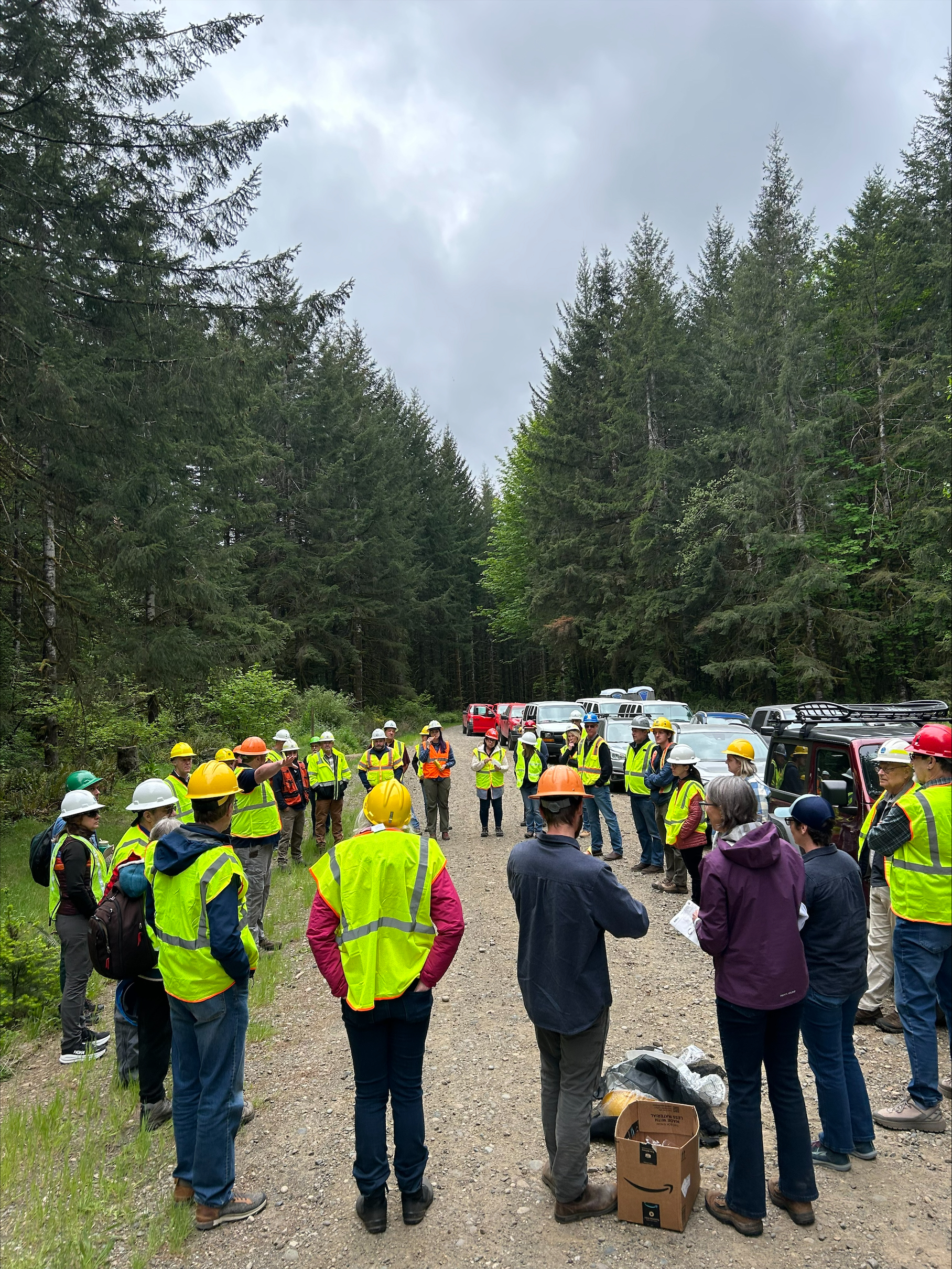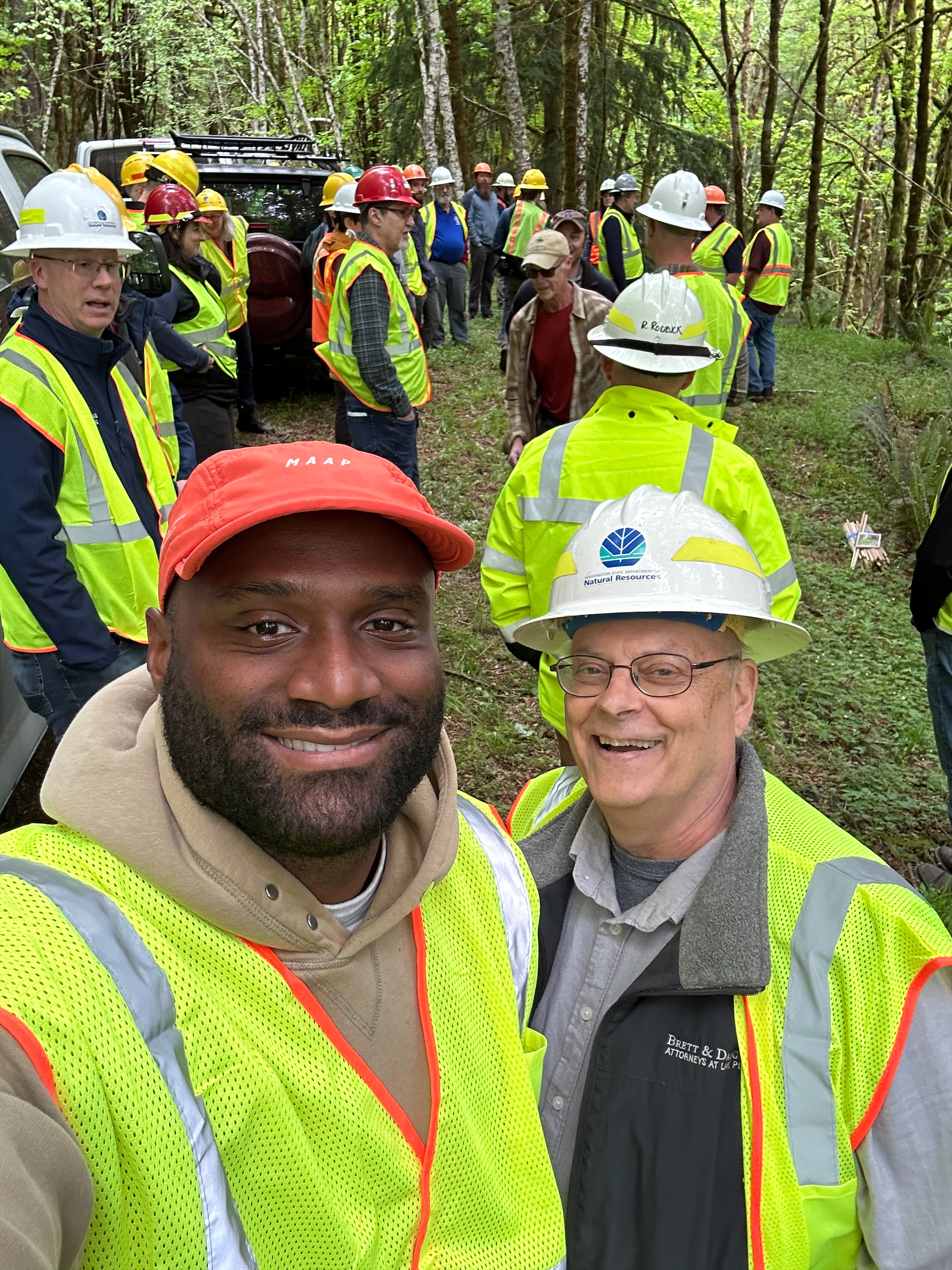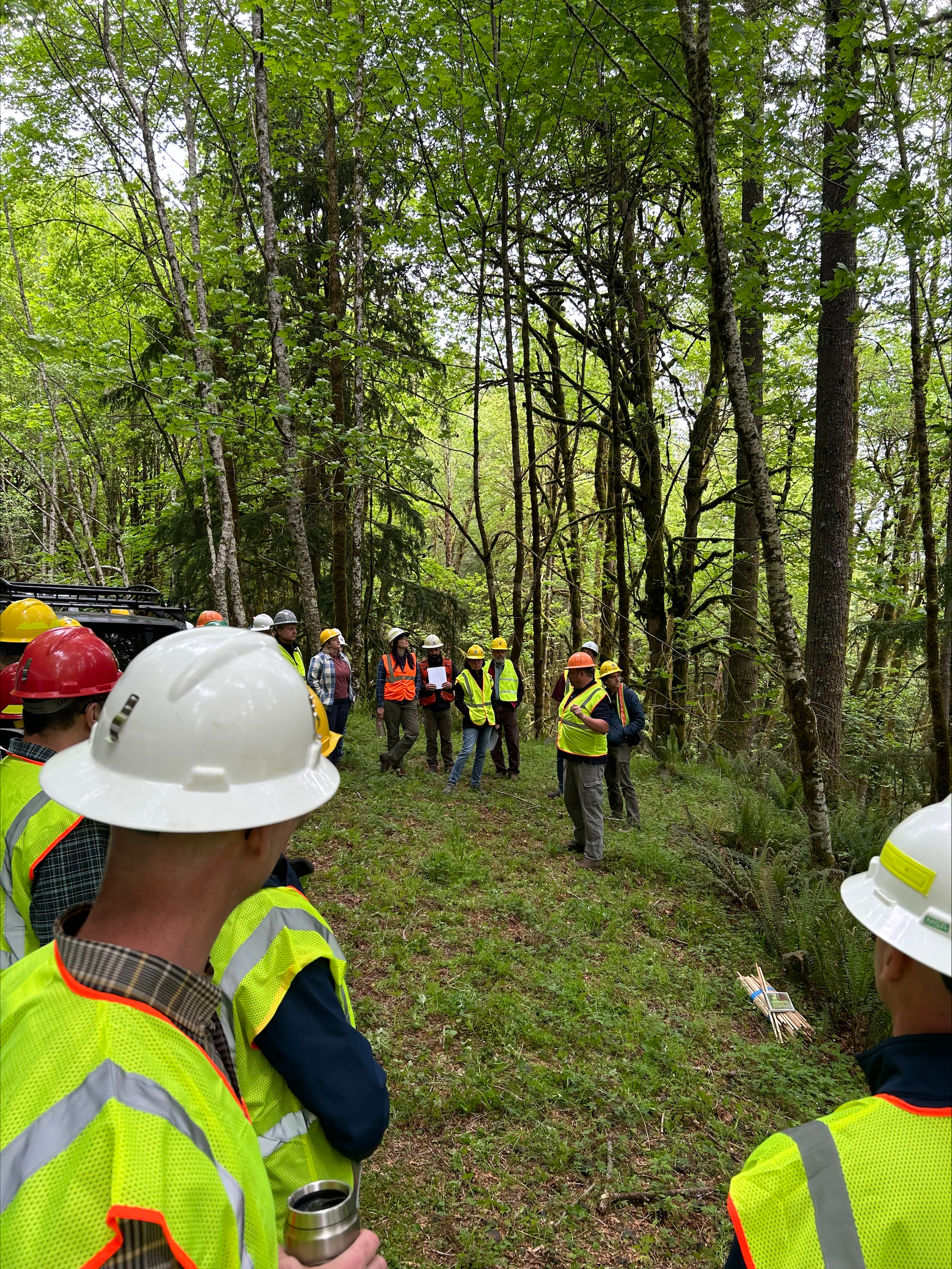On May 7, Russ Pfeiffer-Hoyt, chair of WSSDA’s Trust Lands Advisory Committee (TLAC), and Levon Williams, WSSDA’s policy analyst, joined the Washington Department of Natural Resources (DNR) board for a day-long field trip designed to provide an overview of how Common School Trust Lands generate the revenue that helps support K-12 public education and school construction across the state.
The morning visit to a commercial site on Common School Trust Land highlighted how timber harvests play a role in funding K-12 school construction by contributing funds to the School Construction Assistance Program (SCAP). Additionally, revenue from State Forests is distributed to school districts and counties in rural or forested areas, which helps make up for lower revenue drawn from their limited local property tax base.
The group saw how each step, from forest maturation to timber sale, directs revenue into public education and school construction.
“It’s one thing to study policies on paper, but being out on the land shows firsthand just how our education system is linked to these productive landscapes,” said Williams. “Walking through the Oracle timber sale site, which includes both Common School Trust and State Forest Transfer Lands, really underscored the delicate balance between meeting statewide needs and delivering local benefits since both counties and school districts, particularly in rural areas, rely heavily on the revenue these sales bring in.”
In the afternoon, the group traveled to two ecologically significant properties—McLane Creek Forestry Trail and the Mima Mounds Natural Area Preserve and had the opportunity to learn more about mixed‑use management and how it can maintain timber yields while preserving sensitive ecological areas.
“The conversations around the Maturation II designations were especially insightful,” said Williams. “They show how today’s decisions will not only guide future forest management and harvest practices but also shape how funds are distributed at the state and local levels. Ultimately, those funds will affect a broad range of trust beneficiaries.”
Overall, Levon’s main takeaway from the trip was that it’s important to continue the collaboration between WSSDA’s TLAC and the DNR, especially around finding ways to preserve revenue generation from the Common School Trust Lands for the benefit of public education—particularly for rural and small school districts.
“The Department of Natural Resources and Trust Lands Advisory Committee field trip was an eye-opening experience. I have a much deeper appreciation for how valuable the Trust Lands are for public education.”
For more information on Washington State Trust Lands, please view this FAQ.


